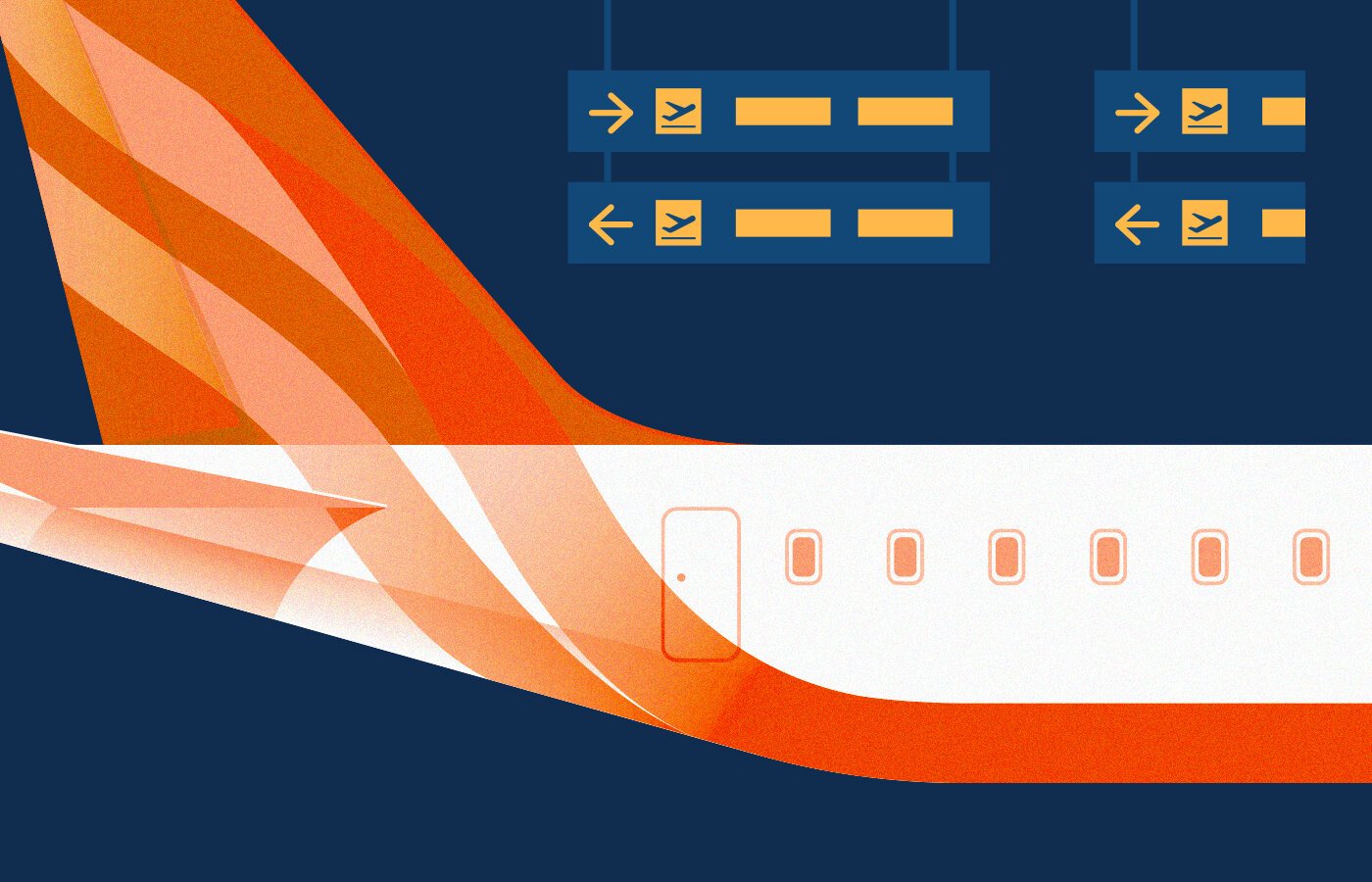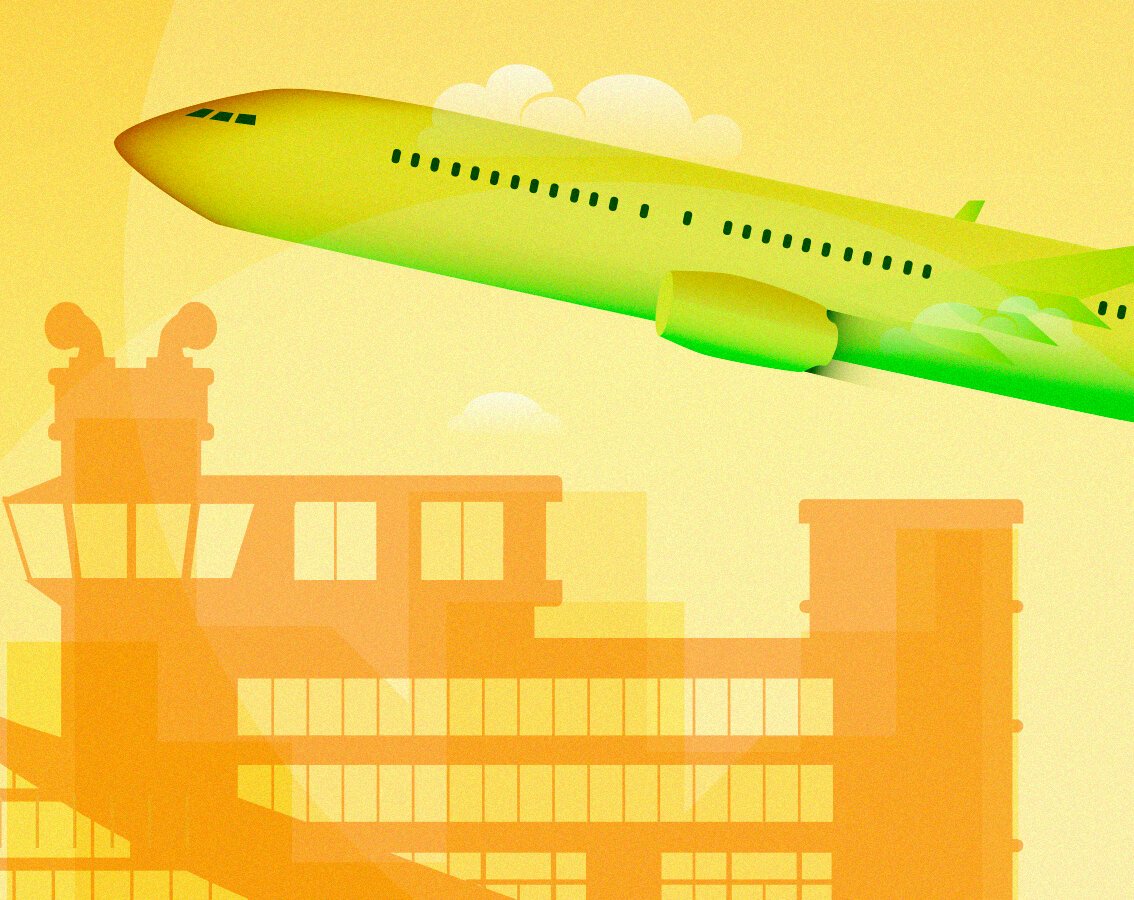blog
How Airlines Operations Can Advance Manifold With Technology
By Mohan S Airport December 2, 2022

Smart digitised airports are defining air travel for customers. Digital transformation in airlines and services like IoT and cloud services can enhance the airline experience and reduce workload in airport operations.
In flight connectivity is the new normal for passengers flying throughout the world. Self service and biometrics are expected to be introduced in the near future where passengers will be able to check in by themselves through biometric verification.
Technology is boosting the efficiency of airlines by using real-time data processing, automation and analytics on a daily basis.
Efficient Aircraft Maintenance
Real-time Inspection
Airlines spend a decent chunk of their resources in aircraft maintenance and security. Safety of an aircraft is of utmost importance. IoT has come up as a source of useful data about aircraft safety that can provide real-time data about aircraft’s crucial systems.
Devices placed on cargo and aircrafts can provide useful data which has enabled better maintenance for aircraft operations. For example, Emirates uses beacon technology to track its equipment which can detect cargo the same way bag tags can help find luggage.
IoT devices communicate the data to the on ground engineers to alert them of the parts and equipment needing the most urgent care. This means ground engineers can be better prepared to finish maintenance without delay.
Real-time diagnosis by IoT has been helping lengthen the life of an aircraft as it allows preventive measures taken on time.
Timely Updates on Malfunctioning Parts
Technologies developed specially for fuel efficiency can reduce the noise by 30%. In the process they also improve payload, carrying capacity and the distance that can be carried in limited fuel.
Similarly, technology prepares updates to schedule timely inspections, allowing aircrafts to have newer/serviced parts sooner. Real time analytics, Desktop to Mobile, Intelligence embedded programs are some of the few ways information can be handled to manage malfunctions on aircraft parts.
Streamlined pre and post flight operations
Mitigating the Risks
1. Data safety
Airlines generate tons of data everyday. Storing this information in an optimized and secure space, instead of having to gather or search through the wide range of data available can actually reduce the risks linked with airline travel.
2. Problem prediction
From Indoor air quality to early smoke detection, having a dedicated housing for such data brings down the probability of airline function failure. It increases the sense of safety in air passengers.
3. Downtime minimisation
By monitoring security threats from a remote control room, where all the security related equipment such as cameras, fire alarms and HVAC can be monitored to detect threats beforehand. As a result airlines can minimise the downtime they might face in a scenario of a security breach.
Assisting Ground Staff by Streamlining Processes
Pandemic has seen a drastic change in how things operate at ground level in airline travel. Increased security check, body temperature tracking, document verification and so much more. The increase in the workload of on ground crew is evident.
Technology can greatly help empower the on ground staff by streamlining these processes and making it easier on the staff and travellers alike.
In 2020, in a global survey, 43 percent of respondents expressed that their confidence in air travel will improve with the introduction of thermal scanning technology during boarding.
Also, by having shared cloud access many airports can stay interconnected and share threats and updates timely to help increase the management efficiency.
Smart Digitized Airports, IoT and Cloud Technology, AI and Machine Learning, Social Distancing Technology, In-Flight Connectivity, Advanced Self-Service and Biometrics and Contactless Technology are some of the technologies assuring that the workflow at ground level stays prepared.
Assist cabin crew mid-flight
We have all heard stories of the bravery displayed by flight crew in times of threat. However, it won't be wrong to say that with or without the security threat scenarios, the responsibility on cabin crew is paramount. Their job doesn't always consist of serving meals and providing comfort. They have to deal with unforeseen circumstances and work accordingly mid air. How is technology helping the cabin crew mid flight?
Provide on Demand Data
Integrating the data to optimize the information available on flying customers can greatly improve the service of cabin crew. Airlines have started presenting data on tablet screens to the in-flight crew.
Milestones achieved, birthdays and anniversaries or anything significant available through data on the customer is recognized and then used to personalize the experience between the cabin crew and passengers.
Digitization for Operational Efficiency
Fortune has shared how flight attendants around the world now have their electronic devices predicting the fastest route to serve and milestones for the passengers (including birthdays and anniversaries). This has greatly improved the in flight service by reducing the time it takes to look after each guest and their needs.
These dashboard tablets are used to input the incidents and issues faced during the flight. Enabling airlines to compensate for such concerns actively.
Augmenting In-flight Experience
Most flights so far used to have food being served from a fixed menu. Now technology has enabled each passenger to shop from their seats by using the merchandise and shopping opportunities available on in-flight entertainment devices. From jewelry to perfumes to skincare, the retail experience of in flight shopping is increasing.
Most flights used to require cash payments on the food or items purchased mid air. However, the newer technology also allows passengers to make digital payments mid air now. Transactions can be made using cards or internet banking for movies, t-shirts or the food that is purchased.
Conclusion:
Airline industry deals with the highest amount of data which can not only transform the flying experience but the whole hospitality industry altogether. AI, robots and digitization is helping airlines achieve greater success everyday. Next time you are at an airport, look around, you would see how this industry is breathing on technology.


